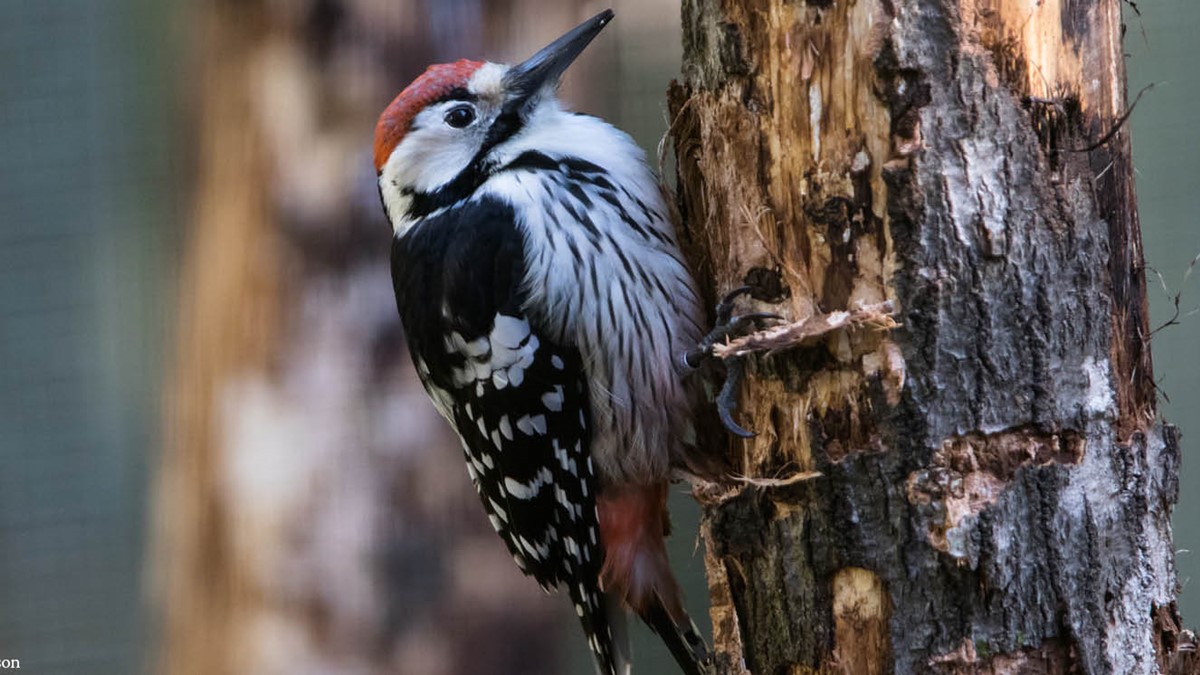White-backed woodpecker
Dendrocopus leucotoThe woodpecker’s head is specially built for extracting grubs from hard wood. Its beak is not fixed rigidly to the skull and this protects the bird as it hammers against tree trunks.
Height: 24 - 27 cm Wingspan: 38 - 40 cm

White-backed woodpeckers have a very particular diet: the larvae of wood-dwelling insects. Each year they hack out a new nesting hole, often high in a rotting aspen, alder or birch. The white-backed woodpecker marks its territory by drumming, for example on dead branches. Different species of woodpecker have different signals, and they can be heard a long way off.
The species’ rapid decline is due mainly to the changing forest landscape. Today’s clearance methods leave too few dead and dying trees, which the woodpecker relies on for foraging.
Read about our efforts in the wild here.



